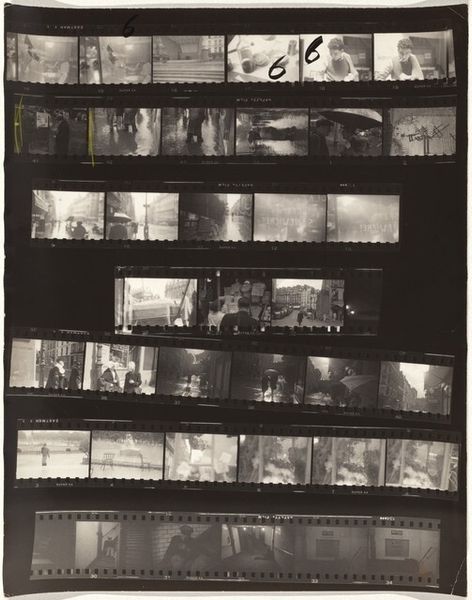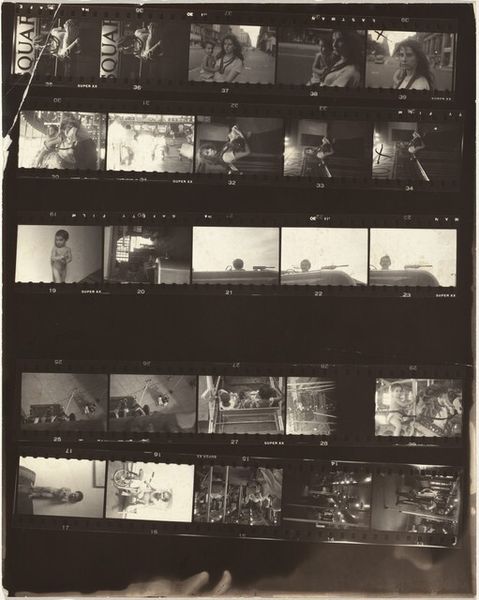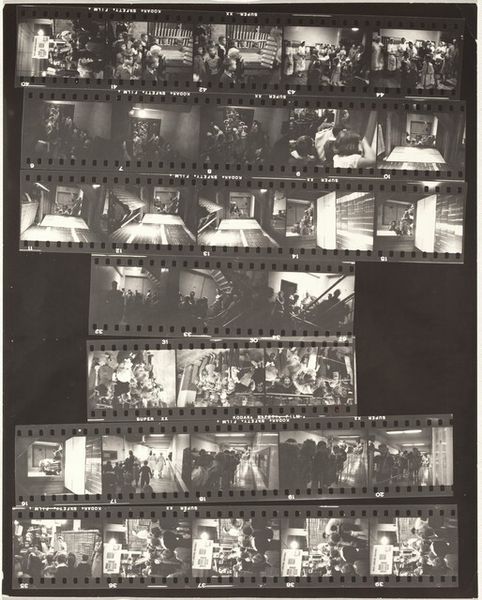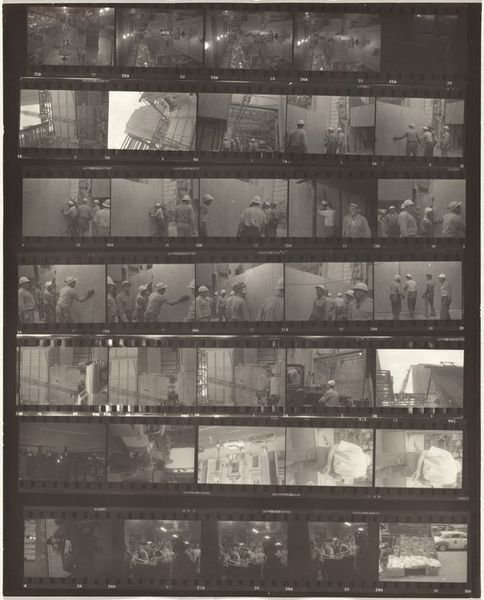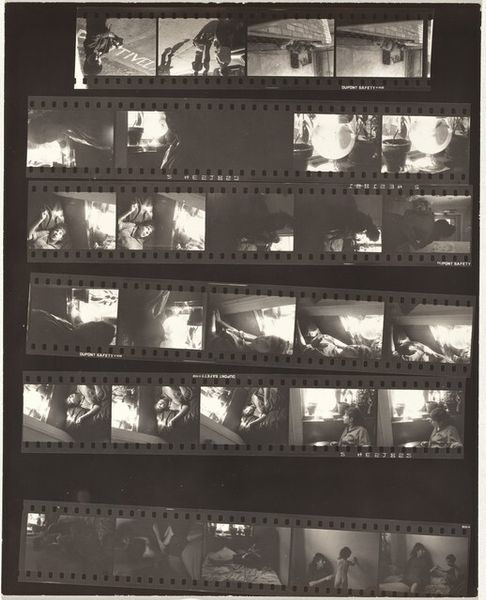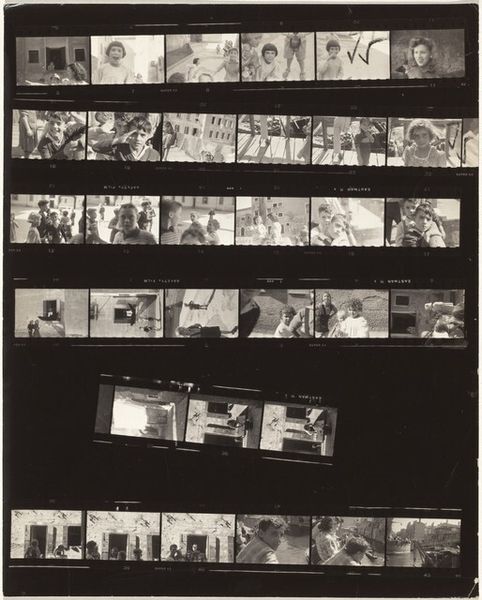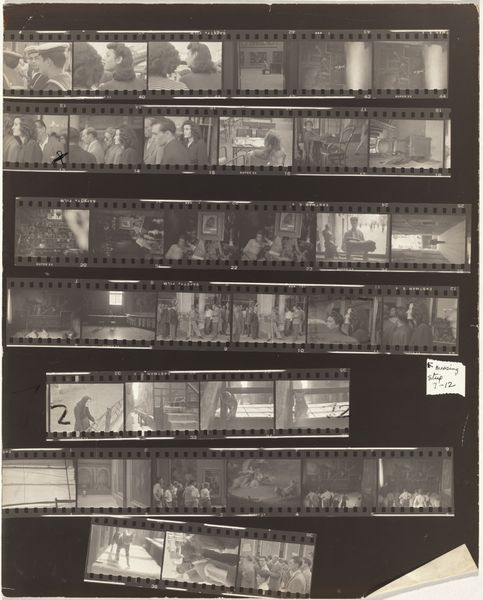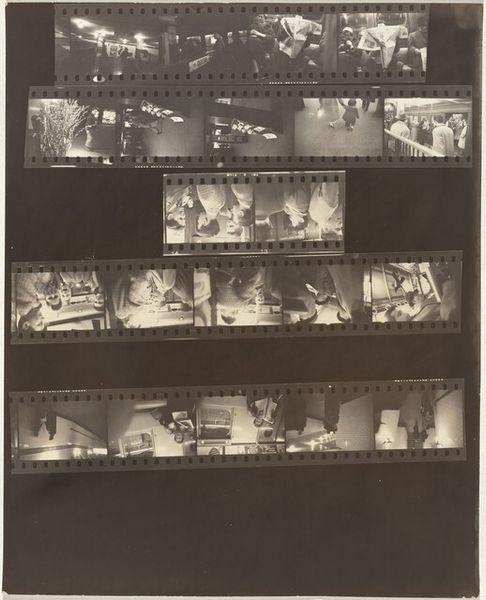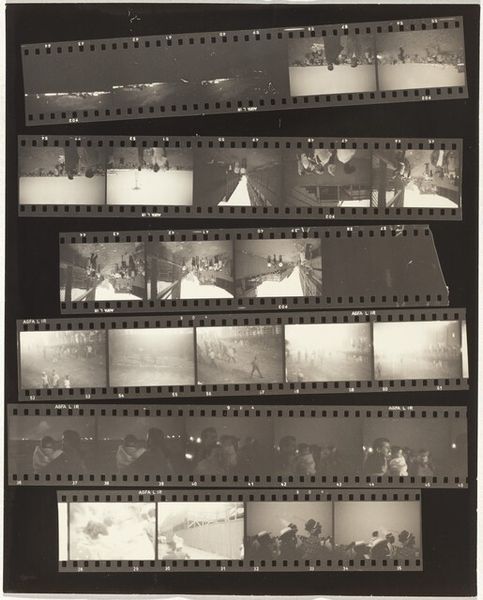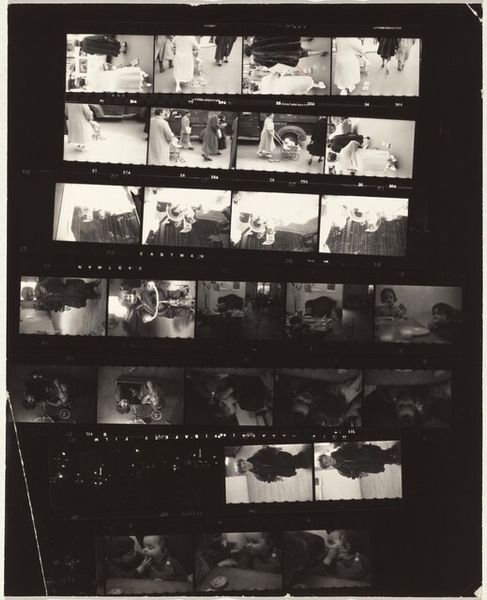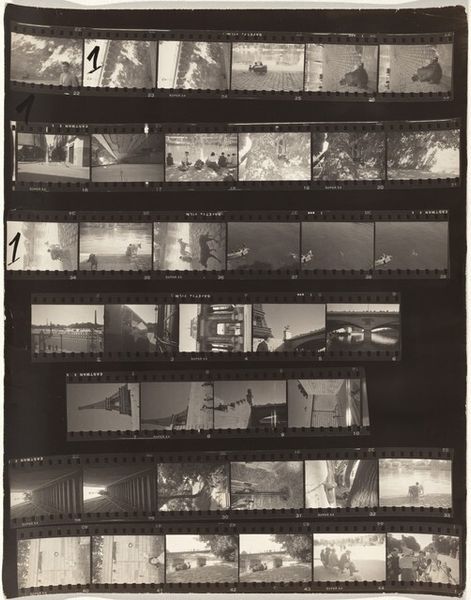
Dimensions: sheet: 25.1 x 20.2 cm (9 7/8 x 7 15/16 in.)
Copyright: National Gallery of Art: CC0 1.0
Editor: This is "Family no number" by Robert Frank, from around 1958 or 1959, a contact print. I'm struck by the almost voyeuristic quality, like we're peeking at someone else's memories. It’s gritty, raw… not at all polished. What's your interpretation of this work? Curator: It's fascinating how Frank disrupts the traditional idea of the photographic portrait. The contact sheet format reveals his process. Consider the cultural context of the late 1950s. What were the dominant narratives about the American family? Frank challenges the idealized image that was so carefully constructed by magazines and advertising. This feels almost like an anti-portrait. Editor: So, instead of the polished image, he's showing the raw, unfiltered reality… Curator: Exactly! He’s using the form itself – the contact sheet, with its imperfections and variations – to make a statement. How might a museum’s presentation of this work affect its reception? Think about the institutional framework shaping what we consider "art." Editor: I guess if you blow it up and frame it, it almost sanitizes it in a way? It loses that kind of raw feel? Curator: Precisely. The act of selection, framing, and display inherently alters its meaning. It becomes "art," divorced from the street photography that was really important to him. In the book *The Americans*, which many of these photos were later included in, the focus was not really on families themselves, but, arguably, on how the public role of families shaped political ideas and ideologies. Editor: I hadn't thought about it that way. Thanks. I’ll look at this, and other photographic artworks, in a totally new way. Curator: Remember that the power of art often lies in its ability to subvert expectations and provoke critical thinking about the world around us. This piece is a powerful testament to that.
Comments
No comments
Be the first to comment and join the conversation on the ultimate creative platform.
